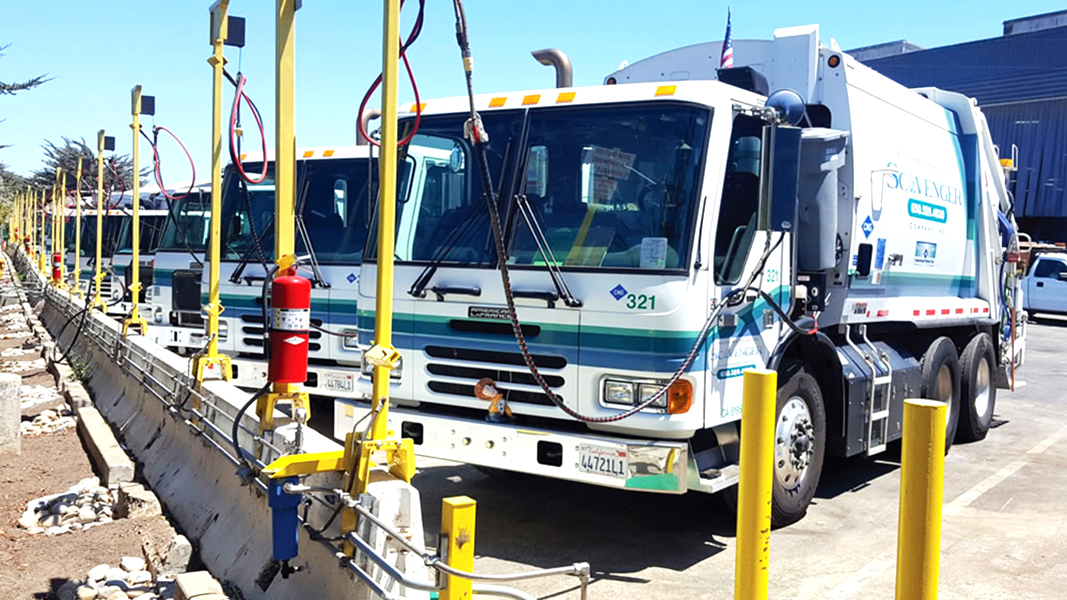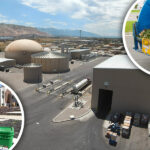Top: South San Francisco Scavenger Company’s fleet includes collection trucks fueled by RNG.
Energy Vision released its latest assessment of the U.S. renewable natural gas (RNG) industry, performed on behalf of the U.S. Department of Energy’s Argonne National Laboratory. RNG is produced using the biogas generated by decomposing organic wastes (landfill, wastewater, animal manure, food waste), which account for 30% of all anthropogenic methane emissions in the U.S. The U.S. and over 100 other countries have committed to cutting methane 30% by 2030 under the Global Methane Pledge. Energy Vision estimates that capturing and processing half of the existing organic waste feedstocks into RNG would get the U.S. halfway to its Methane Pledge goal.
The assessment compiles a database of RNG production facilities in the U.S. that are operational, under construction or planned. The findings show a 33.5% year over year increase — from 313 in December 2020 to 418 by the close of 2021. That includes 230 RNG production facilities now operating (up 46% from 2020), 108 projects under construction (up 42%), and at least 80 projects in various stages of planning. The 230 operational projects can produce enough fuel to displace nearly 574 million gallons of diesel fuel — equivalent to fueling 63,800 refuse trucks per year (35% of the refuse trucks in the U.S.). It is a 24% increase in production capacity since 2020. With 188 new RNG projects under construction or being planned, rapid growth in capacity should continue in the years ahead, notes Energy Vision.
Domestic RNG production potential is estimated to be between 10 and 30 times greater than current production. Achieving U.S. domestic RNG resource potential would also generate enough fuel to displace over 25% of current on-road diesel demand (>10 billion gallons/yr), cutting overall greenhouse gas (GHG) emissions (CO2e) by an estimated 300 million metric tons annually on a lifecycle basis. Switching heavy-duty vehicles from diesel to RNG fuel would result in deep GHG emission reductions overnight. Diesel-powered fleets that convert to RNG will meet and exceed the international goal to cut lifecycle GHG emissions 80% by 2050, and it will do so not 30 years from now, but today. “RNG can decarbonize a meaningful share of the fuel consumed by heavy-duty vehicles,” notes Marianne Mintz, who manages the project for Argonne National Laboratory. “This new Energy Vision assessment shows how rapidly RNG production is ramping up to meet that challenge.”
Adds Joanna Underwood, Energy Vision’s founder: “We’re getting serious about stopping fugitive methane emissions from the fossil fuel industry. That’s critical, but oil, gas, and coal account for only 37% of U.S. methane emissions, compared to 53% from organics and agriculture. There are literally millions of leaks in fossil fuel infrastructure to plug up. By comparison, there are a few thousand major sources of methane-emitting organic wastes. We know where they are and we can address them now by producing RNG. That would create tens of thousands of new permanent jobs — a win-win situation.”
The Energy Vision assessment, including the RNG Project Database, is available to download.













